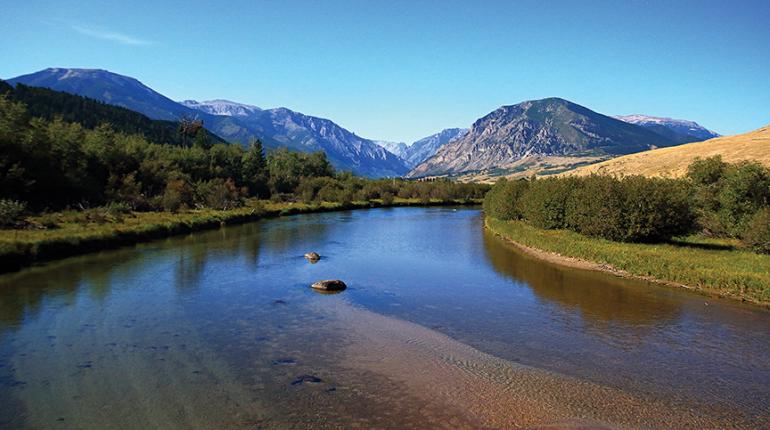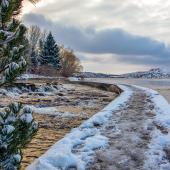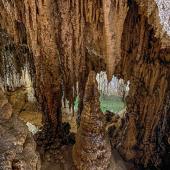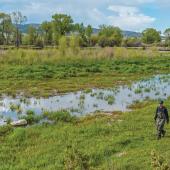Water Gone Wild
Wild & Scenic designations in southwest Montana.
There is a place up in the Absarokas, where a frigid, gin-clear river flows through a sprawling meadow fringed by a burnt-lodgepole forest. The river is filled with big brown trout and some native cutthroat, and its sandbars almost always are imprinted with grizzly tracks. To the east rise towering limestone walls pocked with enormous caves from which golden eagles take flight. To be there with no other two-legged creatures around is pure bliss.
I am drawn to wild rivers like this one for myriad reasons—to fly fish, run whitewater, but more than anything, to ground myself. Mountain peaks have their own undeniable allure, but there’s nothing like flowing water to soothe the soul.
Apparently, I’m not the only resident of southwest Montana who feels this way. A few years ago, a coalition of river advocates, Montanans for Healthy Rivers, commissioned a statewide poll to find out how Montanans value their rivers. Among the findings:
67% of Montanans recreated on a river in the past year
86% of Montanans agree that healthy rivers are essential to our economy and way of life
75% of Montanans support using the Wild and Scenic Rivers Act to protect our rivers
While we expected to see Montanans show a lot of love for our rivers, we were surprised how much support there was for the Wild and Scenic Rivers Act. After all, Montana hasn’t had a wild and scenic river designated since 1976, when the late Senator Lee Metcalf and then-freshman Congressman Max Baucus championed legislation to protect the three forks of the Upper Flathead and a 150-mile stretch of the Upper Missouri through the Breaks.
The good news is, that drought’s about to end.
Last summer, all three members of Montana’s congressional delegation introduced bills to protect East Rosebud Creek along the Beartooth front as Montana’s first new Wild and Scenic River in four decades. Senators Jon Tester and Steve Daines are carrying S.1577 in the Senate, and Rep. Ryan Zinke is pushing H.R. 2787 in the House. With some luck, East Rosebud Creek will gain permanent protection by the end of this year.
For the residents of the East Rosebud Valley, Wild and Scenic designation couldn’t come soon enough. Twice in the last few decades they’ve fought off proposed hydropower dams that would have forever altered the pristine character of the river corridor. In addition to prohibiting new dams, the Wild and Scenic Rivers Act protects rivers by ensuring that their water quality is maintained and their outstanding values such as scenery, wildlife, and recreation aren’t degraded by any federally permitted activities like mining, and oil and gas drilling.
But East Rosebud Creek is just one of many rivers in western Montana that recently have been proposed for Wild and Scenic designation. Some of the most iconic ones are within an hour’s drive of Bozeman—the Boulder, West Boulder, Gallatin, Taylor’s Fork, Madison, Stillwater, and Yellowstone. Less well-known but equally beloved candidates for protection include Big Creek, Hyalite Creek, and Porcupine Creek.
Slightly further afield, the Smith River also is being eyed for Wild and Scenic designation. With a copper mine proposed in its headwaters, there’s never been a better time to take out an insurance policy on its clean water and world-class wild trout fishery.
Together, these southwest Montana gems add up to 200 miles of the prettiest unprotected wild rivers in America.
If you would like to support our efforts to win new Wild and Scenic River designations for these vulnerable waters and more like them on the west side of the Divide, please join the more than 1,000 Montanans who already have endorsed our made-in-Montana proposal at healthyriversmt.org/our-proposal. Future generations will thank you.
Scott Bosse is the Northern Rockies Director for American Rivers in Bozeman.












